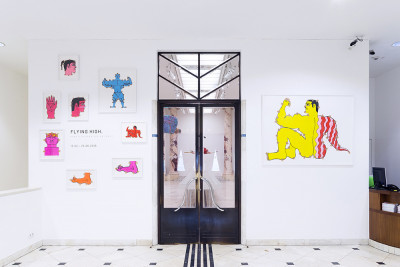Resources
History
It can be argued that the origins of Art Brut lie in the encounter between the Romantic myth of genius and that of the “noble savage”, of “man in his natural state”.
However, it was only at the dawn of the twentieth century that pioneering psychiatrists like Marcel Réja (also known as Paul Meunier) in France, Hans Prinzhorn in Germany, and Walter Morgenthaler in Switzerland began drawing attention to works that, like African and so-called Primitive art, were to prove a fresh source of inspiration and contemplation for modern artists. Artists like Paul Klee and Max Ernst, then living in Paris, shared their enthusiasm for Prinzhorn’s Bildnerei der Geisteskranken (Artistry of the Mentally Ill), first published in 1922. The book contained numerous plates, many in colour, featuring works collected by Prinzhorn himself at a psychiatric hospital in Heidelberg. Picasso and the Surrealists were so fascinated by these new works that some began their own collections.
The striking parallels between modern art and the art of the insane were picked up by Nazi propagandists, who set up the famous exhibition Degenerate Art in 1937 and subsequently toured it around Germany. Pieces from Prinzhorn’s collection were hung alongside works by Klee, Kandinsky, Nolde, Picasso, and Van Gogh, among others, creating visually arresting correspondences between the works that unwittingly drew attention to the debt that the art world owed to such overlooked figures.
The first decades of the twentieth century saw other marginal creators bending the rules of art, including those sometimes described as Naïve artists, although this label is, strictly speaking, incorrect, as Naïve art is far more strictly codified. One such figure is Séraphine Louis, better known as Séraphine de Senlis, discovered by the German art historian and collector Wilhelm Uhde, who was also the first to purchase Picasso’s works. Then there were artists whose works reflected themes similar to those of the Surrealists – spiritualist artists such as Augustin Lesage, a miner from northern France, or self-taught creators such as the Facteur Cheval and his Ideal Palace.
Artistic horizons had clearly expanded considerably: Dubuffet’s writings and collection were to cement this trend, bringing the various strands of unconventional art together.
First collection of works of mentally ill people by Dr. Benjamin Rush (1745-1813), who signed the Declaration of Independence of the United States of America.
The term “folklore” appears, put in fashion by the English critic Thoms.
Allan Kardec publishes Le livre des esprits and starts the Spirite magazine.
Joseph Octave Delapierre publishes Histoire littéraire des fous. He reports that a special place is set aside in the asylum of Hanwell for the resale of “works by the insane.”
Jean Martin Charcot is interested in art by the hysterics, creates a photographic department at the hospital of the Salpêtrière.
Facteur Cheval (1836-1924) starts working on his Palais Idéal in Hauterives (26). The construction will last thirty three years, until 1912.
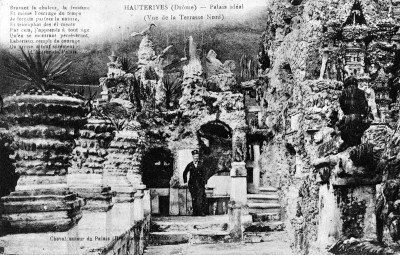
Publication of L’homme de génie by Cesare Lombroso (1835-1909), with a chapter about works by the insane (italian ed : 1882, de Genio e follia, 1864).
In Rothéneu, the abbé Fourré (1839-1910) starts sculpting the rocks, near Saint-Malo in Britany.
Fondation of the American Folklore Society in Boston.
First drawings and writings of Adolf Wölfli (1864-1930) at the Waldau privat hospital in Bern.
First exhibition of works by the insane at the Bethlem Royal Hospital in London.
Auguste Marie (1865-1934), former student of Charcot and Chief Doctor at the asylum of Villejuif, opens a museum with works by some of his patients which becomes a public space under the name of “Musée de la folie” (museum of madness).
Le Dr Rogues de Fursac publishes his work Les Écrits et les dessins dans les maladies mentales.

L’art chez les fous : le dessin, la prose, la poésie, de Marcel Réja (Dr Paul Meunier : 1873-1957), Mercure de France, Paris (réed. Z’éditions, Nice 1994).
Lucien Lévy-Bruhl publishes Les fonctions mentales dans les sociétés inférieures, (Felix Alcan’s bookshop, Paris), a book which connects “primitive art” and “art by the insane.”
The miner Augustin Lesage (1876-1954) hears voices that show him the way to painting.
Dr. Henri Marcel Faÿ analyzes in Réflexions sur l’art et les aliénés the similarities among certain Fauve painters, Expressionists, Cubists and works by the insane. These writings emphasizing the value of the works by the insane will be abused by the Nazis few years later.
Hans Prinzhorn develops a collection of works by the insane in the psychiatric clinic of Heidelberg.
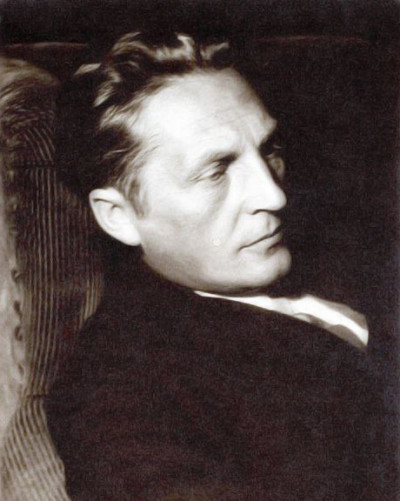
André Breton and Philippe Soupault experiment with automatic writing. The Dadaist painters Baargeld and Max Ernst show their works at the exhibition of “New Tendencies” in German art at the Kunstverein in Cologne along with works by the “insane” and self-taught artists.
First drawings dessins d’Aloïse Corbaz (1886-1964) inmated in Cery, in Switzerland, then in La Rosière, near Lausanne.
Guided by “an invisible force” that she would call “Myrninerest”, Madge Gill (1882-1961) made her first drawings.
Creation of Institut métapsychique in Paris devoted to the rational study of paranormal phenomena.
Simon Rodia (1879-1965 ) settles down in Watts, in the South of Los Angeles and begins the construction of Tours, which will occupy him more than thirty years.
First mention of the term “folk art” in the Oxford English Dictionary.
Dr. Walter Morgenthaler, Chief Doctor and Director of the Clinic of Waldau, publishes a monography on Wölfli : Ein Geisteskranker als Künstler. (A mentally ill person artist).
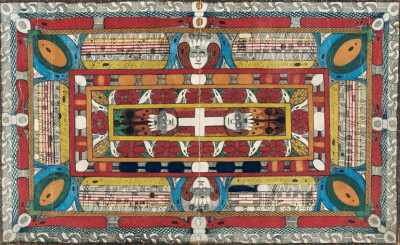
Dr. Prinzhorn’s Bildnerei der Geisteskranken, translated into French as Expression de la folie,(Gallimard, 1984) is published in Berlin.
Max Ernst brings this book to France, Paul Klee quotes from it in his classes on Bauhaus.
Augustin Lesage’s work is shown at the hôtel de ville of Douai.
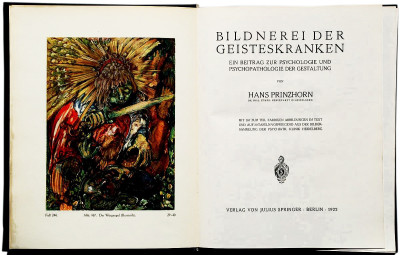
Jean Dubuffet, while serving in the military at the meteorological center of the Tour Eiffel, discovers Clémentine R., a mentaly ill person who draws and interprets the shapes of clouds.
Opening of the Museum of Folk and Peasant Arts, in Riverdale, New York, first American museum of popular art.
L’art et la folie by Jean Vinchon, Ed Stock, Paris (reed. 1950).
Publication of the first Manifeste du Surréalisme. “Art of the insane” and the idea of automatism are widely discussed in the manifesto.
In no.3 of La révolution surréaliste, Antonin Artaud criticizes the psychiatrists who think they have the right to “measure the spirit.” He feels the insane are victims of the domineering ideology and he claims for them “the right to their idea of reality and of all the acts which ensue this idea.”
At the mental hospital of Bel-Air near Geneva, Charles Ladame (1871-1949) opens a small museum of art asilaire.
Augustin Lesage shows his works at the Salon des Beaux-Arts and the Salon d’Automne.
The Vavin-Raspail Gallery organizes an exhibition of the collection of Dr. Marie.
The Max Bine Gallery in Paris presents works from the Prinzhorn collection and from the Bethlem Royal Hospital in London. André Breton bought a work there and then created a series of “poem-objects”.
André Breton discovers the Palais idéal of facteur Cheval.
In Chicago, Henry Darger (1892-1973) begins to illustrate his huge saga In the Realms of the Unreal.
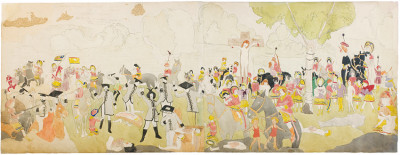
In Chartres, Raymond Isidore ( 1900-1964 ) begins to decorate the inside of his house.
Exhibition On Works of Art of the Insane in New York.
Opening of the musée des Arts et Traditions populaires in Paris.
In Berlin, exhibition Entartete Kunst (Degenerated Art) organised by the nazis.
Gaston Chaissac ( 1910-1964 ) settles down in Paris and begins drawing.
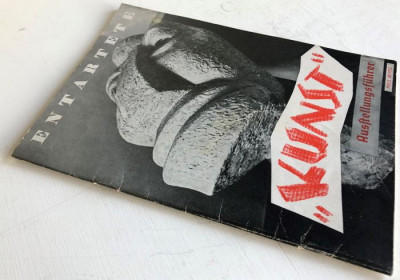
Pierre Avezard (1909-1992), known as Petit Pierre, begins the construction of his merry-go-round.
Asger Jorn becomes interested in art by the”insane” and works at the psychiatric hospital of Roskilde in Denmark. Dr. Ferdière does not succeed in creating a museum of the works by the “insane” unrelated to the hospital.
Eighty five years old, Bill Traylor ( 1854-1947 ), begins drawing in the Montgomery’s main street, Alabama. In three years he will realize two thousand drawings.
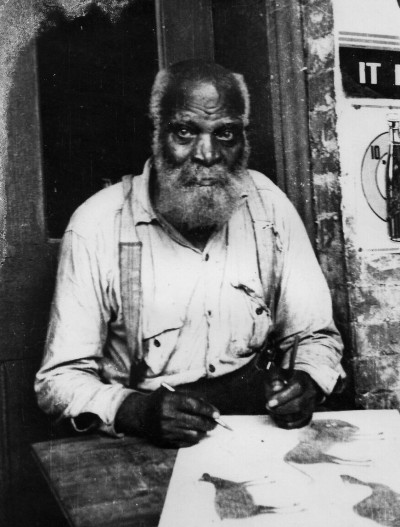
Jean Dubuffet ( 1901-1985 ) gives up the trade of wines and liqueurs to dedicate itself definitively to the painting.
Publication of They Taught Themselves : American Primitive Painters of the Twentieth Century, by Sidney Janis (Dial Press, New York), a fundamental work which will launch the concept of self-taught art in the United-States. The National Endowment for the Arts (NEA) opens a division dedicated to Folk Art.
Dr. Ferdière organizes an exhibition of art by the “alienated” in Montpellier.
“raw gold, I like it better as a nugget than as a watch casing”.
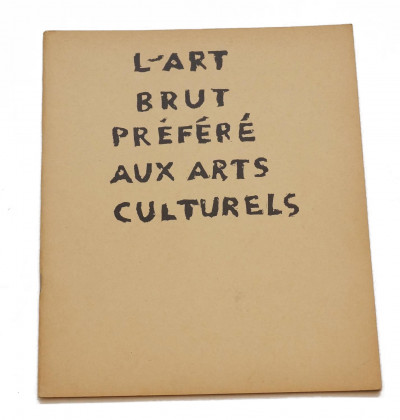
In his early forties, wine dealer Jean Dubuffet decides to dedicate himself to Art. Not any art, one that settles scores with the “ismes” of the time, the museal sclerosis and the cultural diktats. An art carved by explorers. But his terra incognita (unknow land) stood more in the insane asylums and remote countrysides he visited from the mid-forties, researching his “raw gold”. Dubuffet collects ruthlessly Aloïse, Wölfli, Gironella, Crépin, the Barbus-Müller and many more. Then, in 1947, he persuades his galerist René Drouin to welcome in his basement what he will call “Le Foyer de l’art brut”. The task is huge, sources are countless. The creation of “compagnie de l’art brut” in 1948 gathers around him André Breton, Jean Paulhan, Charles Ratton, Henri-Pierre Roché, Michel Tapié and Slavko Kopac. Exhibitions and publications succeeds. Particularly what can be considered as a first manifesto, l’art brut préféré aux arts culturels, a text figuring at the head of the eponymous catalogue of Drouin’s exhibition in 1949.And, despite all the vagary of the Compagnie and its collection, for twenty years Dubuffet manages to collect nearly 5000 works.
When he decides, at the end of the sixties, to pass the torch by donating his collection, the lack of enthousiasm and satisfactory propositions from french institutions leads him to prefer Lausanne in Switzerland where the Collection de l’Art brut opens its gates in 1976.
First appearance of the term “art brut”, in a letter from Dubuffet addressed to the Swiss painter René Auberjonois and dated from august 28th.
Jean Dubuffet starts his collection visiting essentially Swiss psychiatric hospitals as Paul Budry, art critic and writer, invited him to do so.
The first fascicle of Dubuffet’s collection, printed by Gallimard, is dedicated to the Barbus Müller. It won’t be published before 1979 by the Barbier-Müller museum.
Opening of the Foyer de l’Art Brut in René Drouin’s gallery’s basement in Paris.
Fondation of the Compagnie de l’Art Brut by Jean Dubuffet, with André Breton, Jean Paulhan, Charles Ratton, Henri-Pierre Roché, Michel Tapié, and Slavko Kopac. Michel Ragon organizes the exhibition Art brut, naïvisme et littérature prolétarienne at Portes de France gallery, in Paris.
In Woodstock, Clarence Schmidt (1897-1978) starts building his “house of mirrors”. Simon Rodia finishes the Watts towers.
Publication of “L’art des fous, la clé des champs” by André Breton, in Cahiers de la Pléiade, n° 6.
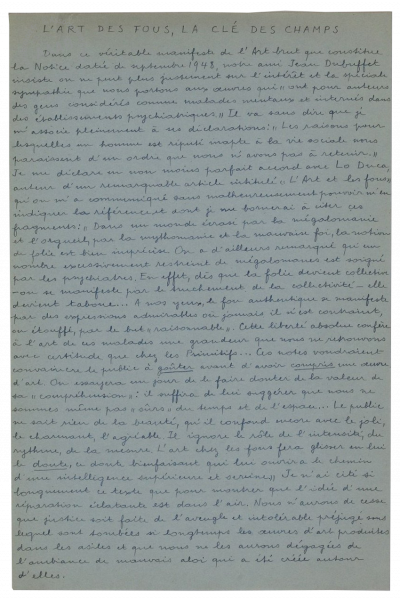
First art brut exhibition at the gallery René Drouin, place Vendôme in Paris (200 works by 63 artists).
Jean Dubuffet publishes L’art brut préféré aux arts culturels.
International exhibition on psychopathologic art in Sainte-Anne hospital, on the 1st global congress of psychiatry. 2000 works are presented.
André Breton gives up the « Compagnie de l’Art Brut » which will be dissolved the same year.
Departure of art brut collections for the United States (East Hampton) where they will stay until spring 1962, hosted by the painter Alfonso Ossorio.
Opening in Zagreb of the Art Paysan gallery, which will become the Museum of Primitive Art, and then the Croatian Museum of Naive Art in 1984.
Publication of Robert Volmat’s book, L’art psychopathologique drawing, among other things, the links between Modern art and mental patients’ works.
Martin Ramirez (1895-1963) offers to Dr Tarmo Pasto a wad of drawings, clandestinely realized at the DeWitt State Hospital of Auburn in California.

Exhibition of mental patients’ works at the Hôtel de Ville in Paris.
In Chandigarh, India, Nek Chand (born in 1924) secretly assembles his first sculptures, initiating the “Rock Garden”, world’s biggest folk art environment.
Professor Volmat participates at the foundation of the Société internationale de psychopathologie de l’expression (international society of psychopathology of expression) and becomes its president.
Gregg Blasdel starts to photography American Folk Art Environments.
Howard Finster (1916-2001) begins his Paradise Garden around his house, in Pennville, Georgia.
Exhibition of Dubuffet’s collection in New York at Cordier and Ekstrom gallery. Reforming of the Compagnie de l’Art Brut ,now installed at the 137, rue de Sèvres in Paris.
With his wife Liseron, Robert Tatin (1902-1983) settles in Cossé-le-Vivien (Mayenne) where he begins the construction of La Frênouse.
Publication of Les Inspirés et leurs demeures, by Gilles Ehrmann, prefaced by André Breton, first photographic book on art brut gardens and constructions in France.
Harald Szeemann commissaire de l’exposition “l’art de malades mentaux” (collection de Hans Prinzhorn) à la Kunsthalle de Berne.
Edition of the first fascicle L’Art Brut under the direction of Jean Dubuffet.
Publication of Surrealism and Painting by André Breton including a notice on Joseph Fleury Crépin.
Inauguration of Insita, international naive, folk and art brut triennial, organized at the National Slovak gallery in Bratislava.
Exhibition L’Art Brut at the museum of Decorative Art in Paris. 700 works by 75 artists of the Compagnie de l’Art Brut’s collection are displayed for the first time to a wide audience.
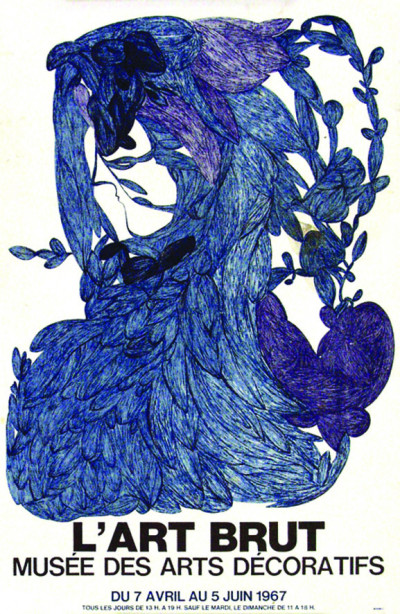
Gregg Blasdel invents the term “grass-roots” in a major article presenting fifteen American sites of spontaneous art.
Serge Tekielski, aka Candide (1931-2002), acquires his house of Bayssac, at Lavilledieu, in Ardèche: the “Petit Musée du Bizarre”, a traditional and contemporary folk art museum.
André Malraux (Minister of Culture in France) classifies the Palais Idéal du facteur Cheval as a Historic monument.

From the 70’s onward, new collections and small museums emerge, as the Fabuloserie in Dicy. Dubuffet’s theoretical outlines are transgressed while an independent network of passioned amateurs gather under the name art singulier (singular art) – what is called « neuve invention » in Lausanne – works from self-taught marginals unfamillar with official art. Renowed workshops also open in psychiatric hospitals like Gugging (in Austria), La Tinaia (in Italy) or la Pommeraie (in Belgium). All over the world, people discover singular environments built by the « inspired along the roads » and others «builders of the imaginary».
Appetite for margins and experience of limits are in vogue.
In the USA, during the first two decades of the XXth century, art brut’s geographic perimeter, so far mainly European, is expanding. Works of Henry Darger, Bill Traylor or Martin Ramirez integrate outsider art collections. This term, invented by the English art historian Roger Cardinal as a synonymous of art brut, will soon bring together on the other side of the Atlantic, other forms like folk art, naive art, visionary art, or in short, self-taught or marginals art.
This liberty taken with Dubuffet’s doctrine clearly appears in the international magazine Raw Vision created in 1989 by John Maizels, and as well in the bias of the New-York Outsider Art Fair which plays, since 1993, a leadership role in this market in the USA.
This multiplication of this abuses and currents encourages a small group affected by the departure of Dubuffet’s collection, to create in 1982 the L’Aracine collection. In 1995, the donation of more than 3500 pieces, will found the heart of the first french public collection whose museum will open in 2010 in Lille - Villeneuve d’Ascq.
Researches, publications, museums and collections are multiplying, answering the growing craze of a public who, sometimes tired of the agreed contortion of the official art, find in the « savage values » of art brut something to quench their search for meaning.
Alain Bourbonnais (1925-1988) opens L’Atelier Jacob, Galerie d’Art « hors-les-normes » in Paris.
Outsider art by Roger Cardinal, Studio Vista, London, first art brut publication in english.
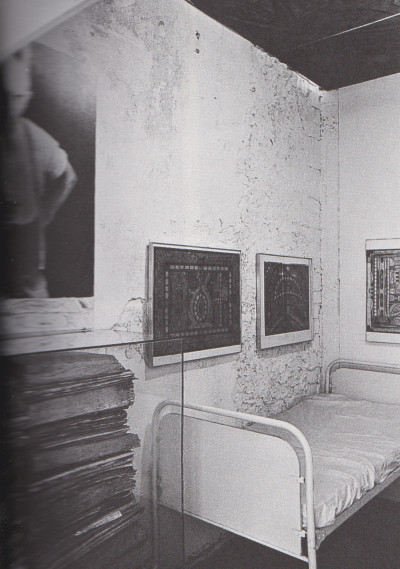
Exhibition Gaston Chaissac at the Musée National d’Art Moderne de la Ville de Paris.
Exhibition Naïves and Visionaries at the Walker Art Center of Mineapolis.
Publication of L’Art brut by Michel Thévoz, Skira, Geneva.
Howard Finster has a vision of an angel calling upon him to « paint sacred art ».
February 26th, inauguration of the Collection de l’Art brut at the Château de Beaulieu, in Lausanne (museum curator Michel Thévoz assisted by Geneviève Roulin).

Publications : Les secrets du Facteur Cheval by Michel Friedman, L’Etrange Domaine de Robert Tatin by Brigitte and Richard Jeandelle, Editions Simoën, Paris. Jardins Imaginaires, by Bernard Lassus, Presses de la Connaissance.
Les Singuliers de l’Art, Des Inspirés aux habitants-paysagistes, exhibition at the Musée d’Art Moderne de Paris (345 works by Galerie Jacob, installations of Bernard Lassus, audiovisuals by Claude and Clovis Prevost).
Foundation of Spaces, a nonprofit organization for the preservation of art environments of contemporary folk art in Los Angeles (dir. Seymour Rosen). Watts tower are registered on the United States National Register of Historic Places and will get the National Historic Landmark status in December 1990.
Les Inspirés du Bord des Routes, by Jacques Verroust and Jacques Lacarrière, Le Seuil, Paris.
Outsiders, first international art brut exhibition at the Hayward Gallery, in London.
Foundation of the Outsider Archives by Victor Musgrave and Monica Kinley in London.
Attention Art Brut, Pour un art populaire and Béton charmeur, three broadcast programs by Claude Place and Bernard d’Abrigeon, on TV channel FR 3 Marseille. Petit Pierre, by Emmanuel Clot, gets the short movie Cesar.
First issue of Folk Art Finder, Connecticut.
Fantastic Architecture Personal And Eccentric Visions by George R. Collins, Michaël Schuyt and Joost Eiffers, Abrams New York / Le Chêne Hachette Paris.
Opening by the psychiatrist Léo Navratil of the Haus der Künstler, at the Gugging clinic, in Klosterneuburg, Austria.
Monika Kinley and Victor Musgrave start up “The Outsider Archive”.

The “collections annexes” (extended collection) of Lausanne become “Neuve Invention”, called art singulier (singular art) in France.
Black Folk Art in America. 1930-1980, founding exhibition at the Corcoran Gallery of Art, Washington D.C.
Official inauguration of the Fabuloserie, in Dicy (France), by Caroline and Alain Bourbonnais.
Inauguration of the Musée de l’Aracine in Neuilly-sur-Marne. Association’s founders are Madeleine Lommel, Michel Nedjar et Claire Teller.
Creation of Art en Marge, Research and Distribution Center, in Bruxelles. The Association will inaugurate its exhibition rooms two years later.
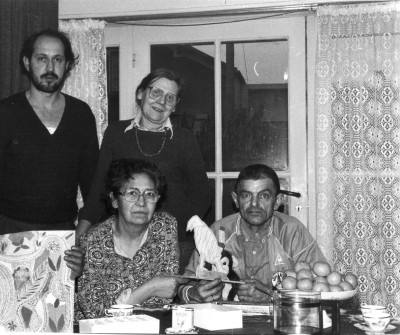
Peggy Guggenheim Fondation, in Venise, presents Jean Dubuffet et l’art brut exhibition.
Opening of the Museum of Naïve Art Max Fourny, at the Halle Saint-Pierre in Paris (will become the main art brut and singular art museum in the capital starting October 1995).
The Bulletin of the Association of the Friends of François Ozenda, founded in Salernes by Jean-Claude Caire, confirms its opening to art brut and singular art under all shapes and becomes the main archive source on singular creation in France.
First issue of Folk Art Messenger, bulletin of the Folk Art Society of America, in Richmond, Virginia.
Exhibition Augustin Lesage at the musée des Beaux-Arts in Arras and at the Regional Ethnology museum of Béthune. Chaissac & Dubuffet exhibition in Paris, at Centre Georges Pompidou.
Inauguration of the “manège de Petit Pierre” (Petit Pierre’s carroussel), reconstituted at the Fabuloserie.
Gérard Sendrey opens le Fonds de la Création Artistique Brute et Inventive (FCABI) in Bègles (Gironde). It will become le Site de la Création Franche the following year. First edition of Jardiniers de la Mémoire.
Opening of the Centre Humanitaire, art brut museum, in Moscow.
First issue of Raw Vision, international magazine on Art Brut & Outsider, edited by John Maizels (London, Paris, New York, Melbourne). First to be biannual and english-french bilingual, the magazine will become three-monthly in 1992.
Outsiders, fous, naïfs et voyants dans la peinture moderne (1880-1960), by Christian Delacampagne, Editions Mengès, Paris (reissue 1994).
The Discovery of the Art of the Insane, by John MacGregor, Princeton University Press, Princeton, New Jersey.
Guide de la France Insolite, by Claude Arz, Editions Hachette, Paris.
Les Bâtisseurs de l’Imaginaire, by Claude et Clovis Prévost, Editions de l’Est.
First issue of Création Franche, Bègles.
First issue of L’œuf sauvage, at the crossroad with surrealism, primitive art and art brut.
First issue of Gazogène, in Cahors.
Fondation of INTUIT (Center for Intuitive and Outsider Art) in Chicago.
Parallel Visions: Modern Artists & Outsider Art, a travelling exhibition started at Los Angeles County Museum of Art (october 1992 - january 1993 in Los Angeles, then Madrid, Basel and Tokyo). Catalogue: Princeton University Press.
In New York, the Clarion, magazine of the Museum of American Folk Art, becomes Folk Art magazine.
In Lausanne, Henry Darger exhibition (Lerner donation) at the Collection de l’Art Brut.
First Outsider Art Fair of New-York, annual event for singular and art brut organized by Sanford L. Smith and Associates at the Puck Building.
Made in USA, first European exhibition of American outsider artists at Collection de l’Art Brut of Lausanne (25 artists). Another exhibition is dedicated to Bill Traylor.
Opening of De Stadshof, a naive and art brut museum in Zwolle, Netherlands.
Inauguration of the Cérès Franco Collection in Lagrasse, near Carcassonne (Aude).
First Folk Fest Art Fair in Atlanta, Georgia.
Publication of La France Insolite, by Claude Arz, Hachette, Paris.
Opening of AVAM (American Visionary Art Museum), in Baltimore, Maryland. Founded by Rebecca Hoffberger, every year presents a large-scale thematic exhibition.
Art Brut et Cie : la face cachée de l’art contemporain, six francophone collections of art brut and singular art at La Halle Saint-Pierre, in Paris. Catalogue by M. Lusardy, V. Antoine-Andersen and L. Danchin, Editions de la Différence, Paris.
Launching french edition of Raw Vision. Lacking of subsidies, it will be stopped a year later.
In Bruxelles, the Musée d’Art Spontané, ex- Maison des Arts Spontanés et Naïfs, settles in an old printing house.
Italian magazine L’Arte Naive (dir. Dino Menozzi) decides to opens itself to art brut and outsider. It will deliberately stop in December 2002.
Exhibition La Beauté insensée at Palais des Beaux-Arts de Charleroi then at the Collection de l’Art Brut in Lausanne, dedicated to Prinzhorn’s collection.
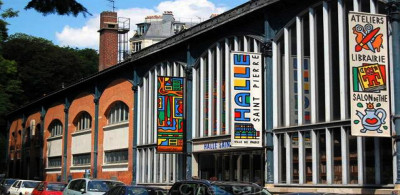
Exhibition Le dernier continent ou la Waldau, asile de l’art at the Swiss cultural center of Paris.
L’Aracine collection is transfered at the Musée d’Art moderne de Lille Métropole (LaM), in Villeneuve d’Ascq.
Opening of the Charlotte Zander museum in Bönnigheim, Germany.
Contemporary American Folk Art : a collector’s guide, by Chuck and Jan Rosenak, Abbeville Press, New York-Londres-Paris (181 inventored artists).
Du côté de l’Art Brut, by Michel Ragon, Albin Michel, Paris.
Foundation of Luna Rossa, an association for the preservation of Art Brut and popular art environments, by Olivier Thiébaut, author of Bonjour aux promeneurs (sur les chemins de l’Art Brut), ed Alternatives, Paris. The association is opening an 800 m2 sculpture garden in the heart of the city in Caen.
Opening of the Contemporary Center of the Museum of American Folk Art of New York, dedicated to art brut and outsider.
L’Art Brut, by Lucienne Peiry, Flammarion, Paris (réed. 1999, édition anglaise 2001).
Exhibition L’Art Brut in Prague. Exhibition Kunst & Wahn in Vienne.
Art Outsider et Folk Art des collections de Chicago, fifty self-taught American artists for the first time in Paris at la Halle Saint-Pierre. Catalogue by Laurent Danchin and Martine Lusardy.
The Centre-annexe d’Art Différencié of CREAHM in Liège becomes the Musée d’Art Différencié (MAD).
Musgrave-Kinley Collection is transferred at the Irish Museum of Modern Art in Dublin.
Le Pluriel des Singuliers, first edition of a biennale organised by Espace 13, in Aix-en-Provence (catalogue ed. Actes Sud).
First Festival du Film d’Art Singulier (singular art film festival), organized by the association Hors Champ, animated by Pierre-Jean Würtz at the MAMAC of Nice.
Raw Vision elected best art magazine of the year 1998 by the UNESCO.
Creation of abcd (art brut connaissance & diffusion) by Bruno Decharme and Barbara Safarova.
Exhibition Art spirite, médiumnique, visionnaire, messages d’outre-monde at the Halle Saint-Pierre of Paris.
Art Brut, art dissidents of Hong Mi-Jen, Artist Publishing Co, Taiwan : the first book on art brut in Chinese.
Exhibition of abcd’s collection at musée Campredon of L’Isle-sur-la Sorgue under the name Folies de la Beauté.
Outsider Art : Spontaneous Alternatives, by Colin Rhodes, Thames & Hudson, London (the book will be published in Paris the next year under the name L’art outsider : art brut et création hors normes au XXe siècle).
1900-2000 : un siècle de création singulière, at the 7th edition of the festival Art et Déchirure, founded in 1989 in Rouen.
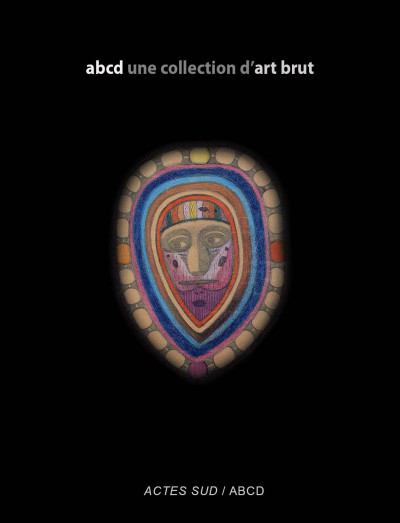
Geneviève Roulin died. Lucienne Peiry succeeds to Michel Thévoz in Lausanne (Art brut collection).
The Museum of American Folk Art becomes the American Folk Art Museum (AFAM) and inaugurates its new building, 45 West 53rd Street, in New York, with an exhibition of Henri Darger.
Beginning of an American tour, abcd, a collection of art brut which will last 3 years.
European commission grants one million euro to ITE, a Finnish project on contemporary folk art and art brut (Contemporary folk art in Europe - equal right to creativity).
Collection De Stadshof finds asylum at the Musée Dr Guislain, in Ghent, Belgium.
Symposium « Inside outsider Art » at Tate Modern, London.
S.O.S environnements singuliers backing by UNESCO.
Exhibition A corps perdu, at Pavillon des Arts (30th April - 26th September 2004), Paris.
Symposium « Margins and Maintream » by the Creative Growth Art Center in Oakland, California.
Fondation of galerie Christian Berst.
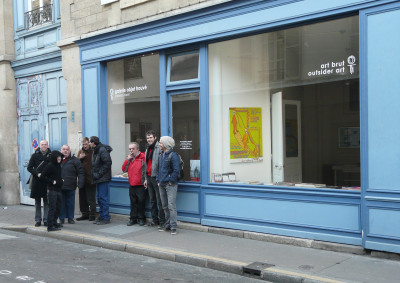
Pour la première fois en France, la Maison rouge consacre une exposition monographique à Henry Darger.
Exposition Art brut, collection abcd à la Galerie municipale de la ville de Prague
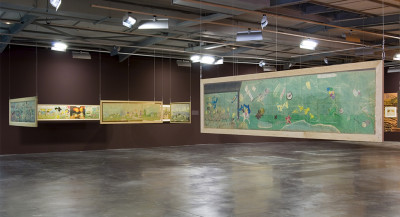
Fondation of IIRELF (Institut International de Recherche et d’Exploration sur les Fous Littéraires, Hétéroclites, Excentriques, Irréguliers, Outsiders, Tapés, Assimilés, sans oublier tous les autres…)
Death of Madeleine Lommel, foundating member of Aracine.
Opening of the Museum of Everything in London.
Symposium : Art brut, une avant-garde en moins? organised by the INHA (institut national d’histoire de l’art) and the Musée d’art moderne de Lille Métropole (LaM), at the INHA, December 2009.
The first exhibition of the Museum of Everything (London), lasts 4 monts at the Agnelli Fondation in Turin.
Opening of the LaM, Musée d’art moderne, d’art contemporain et d’art brut de Lille-Métropole.
Fondation of CrAB (Collectif de réflexion autour de l’Art Brut).
The Musgrave Kinley Outsider Art Collection settles at the Whitworth Art Gallery.
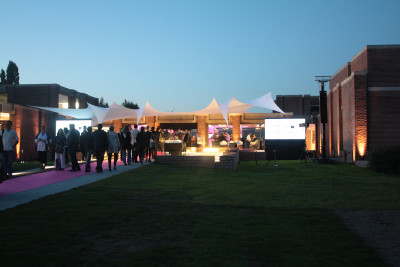
First Adolf Wölfli retrospective since 1948 at the LaM.
In its exhibition world transformers, the art of the outsiders, the Schirn Kunsthalle of Frankfurt presents the works of August Walla, Aloïse, George Widener and Judith Scott.
Exposition Art Brut. Anatomia Metamorphosis. Lubos Plny, Anna Zemankova. Museum of Contemporary Art Hiroshima, 26 mai – 6 juillet.
Exposition “Je suis le cerveau de l’univers.” Zdenek Kosek. Paris, Palais de Tokyo, 12 avril – 5 juin.
Exposition Art Brut. Anatomia Metamorphosis. Lubos Plny, Anna Zemankova. Hyogo Prefectural Museum of Art, Kobe, 4 février – 25 mars.
Exposition Art brut - Terra incognita. Collection Treger-Saint Silvestre, Fondation Arpad Szenes - Vieira Da Silva à Lisbonne, du 20 avril au 23 septembre.
The centre Pompidou acquieres its first art brut piece : a drawing by Lubos Plny.
Eugene Von Bruenchenhein, Anna Zemankova, Guo Fengyi, Bispo de Rosario and many more art brut creators are presented at the Venice biennale.
Magazine Art Press publishes a special issue devoted to art brut.
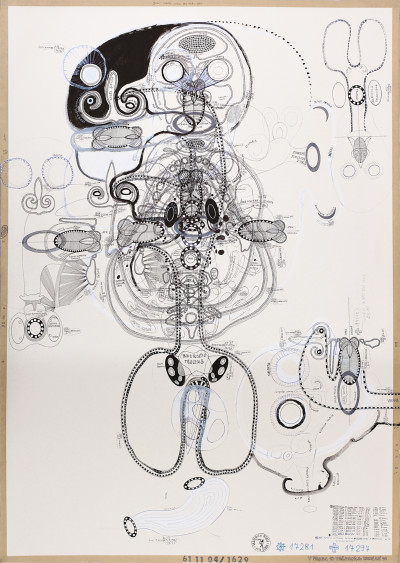
Opening of the first art brut museum in Portugal. The Oliva Creative Factory in São João da Madeira (near Porto) welcomes the art brut collection of Richard Treger & Antonio Saint-Silvestre.
Exhibition Art brut, collection abcd / Bruno Decharme at la Maison rouge (Paris).
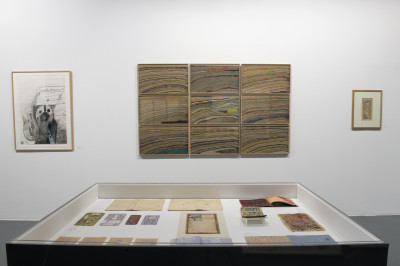
Exposition Elevations. Collections Bruno Decharme et Antoine de Galbert. Hommage à Joseph Ferdinand Cheval. Hauterives, Le Palais idéal du facteur Cheval, 30 avril – 30 août 2015.
Exposition Art Brut Live. abcd collection / Bruno Decharme. Center for Contemporary Art DoX, Prague, 27 mars – 17 août 2015.
Exposition brut now: l’art brut au temps des technologies, commissaire : christian berst; commissaires associés : brut pop, musées de belfort, du 29 octobre au 16 janvier 2017.
The Treger / Saint Silvestre art brut collection receives the best private collection award in Portugal.
Dan Miller, Lubos Plny and Judith Scott are part of the official selection by Christine Macel, curator of the Viva Arte Viva exhibition at the 2017 Venice Biennale.
Arthur Borgnis directs the first documentary on the history of art brut “Eternity has no door of escape”.
Melvin Way and Leopold Strobl enter the MoMA’s collections in New York.
More than fifteen art brut artists are displayed in the last exhibition of the Maison rouge: l’Envol.
The Kunstforum museum in Vienna presents the first exhibition with more than 300 works by 93 women art brut artists of 21 different nationalities - from 1860 to the present day.
First exhibition of art brut in Luxembourg, at the Pinacothèque opened by the collector Hervé Lancelin.
